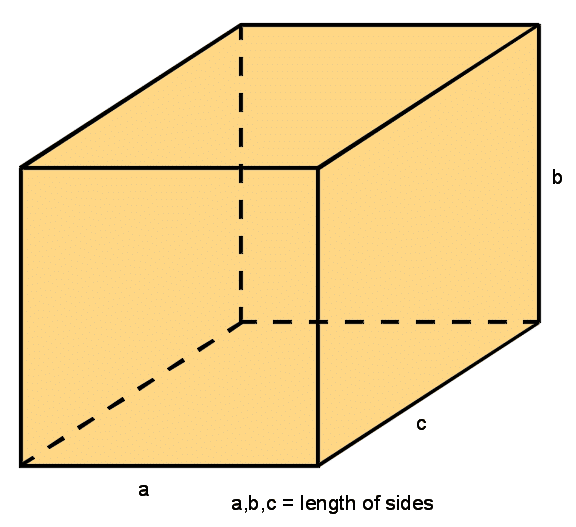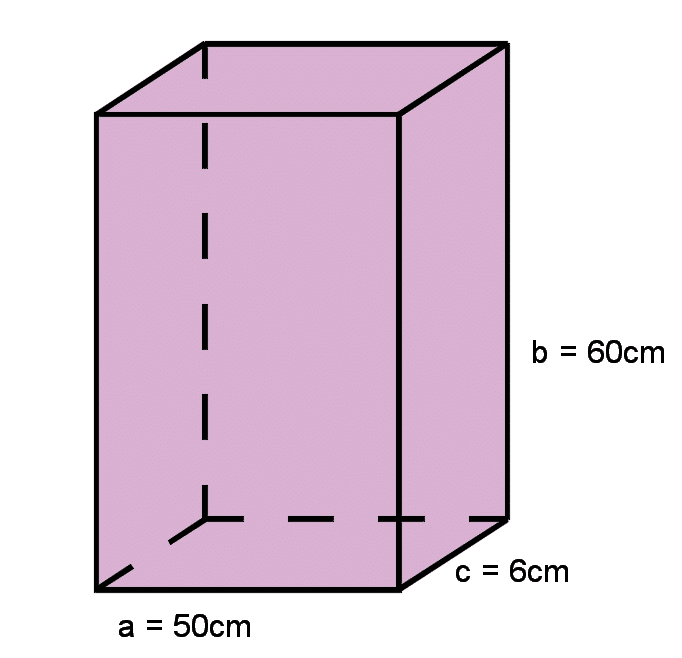Calculation of Cuboid Surface Area
Table of Contents
Surface Area of a Cuboid
The surface area of a cuboid formula is the sum of all the sides/faces of the 3D shape. The cuboid has 6 faces/sides altogether.

The surface area of a rectangular prism is the sum of the areas of all six sides. All sides of the Prism are right angles, which makes the opposite faces of the cuboid equal.
In this shape, the opposite side have the same area (top and bottom face are equal, front and back face are equal, left and right sides are equal).
a = length, b = height, c = width
Front and Back face:2ab
Top and bottom face: 2ac
Side face: 2bc
The combined area is 2ab + 2ac + 2bc
Formula for Surface area of a Cuboid = 2ab + 2ac + 2bc
Surface Area of a Cuboid Example 1

A rectangular water tank has a length of 400mm, height of 250mm and width of 100mm. Find the surface area of the water tank.
Solution:
The formula for surface area of a cuboid is 2ab + 2ac + 2bc.
a = 400mm
b = 250mm
c = 100mm
The surface area = 2*(400*250) + 2*(400*100) + 2*(250*100) = 330,000 mm2.
This can also be written as 0.33 m2 (330,000 multiplied by 10-6 to convert from mm2 to m2).
Note – remember to check units when calculating the surface area.
Surface Area of Cuboid Example 2

A cuboid has a length of 50 cm, height of 60 cm and width of 6 cm. Find the surface area of the cuboid.
Solution:
The formula for surface area of a cuboid is 2ab + 2ac + 2bc.
a = 50 cm
b = 60 cm
c = 6 cm
The surface area = 2*(50*60) + 2*(50*6) + 2*(60*6) = 7320 cm2.
This can also be written as 0.732 m2 (7320 multiplied by 10-4 to convert from cm2 to m2).
Note – remember to check units when calculating the surface area.
